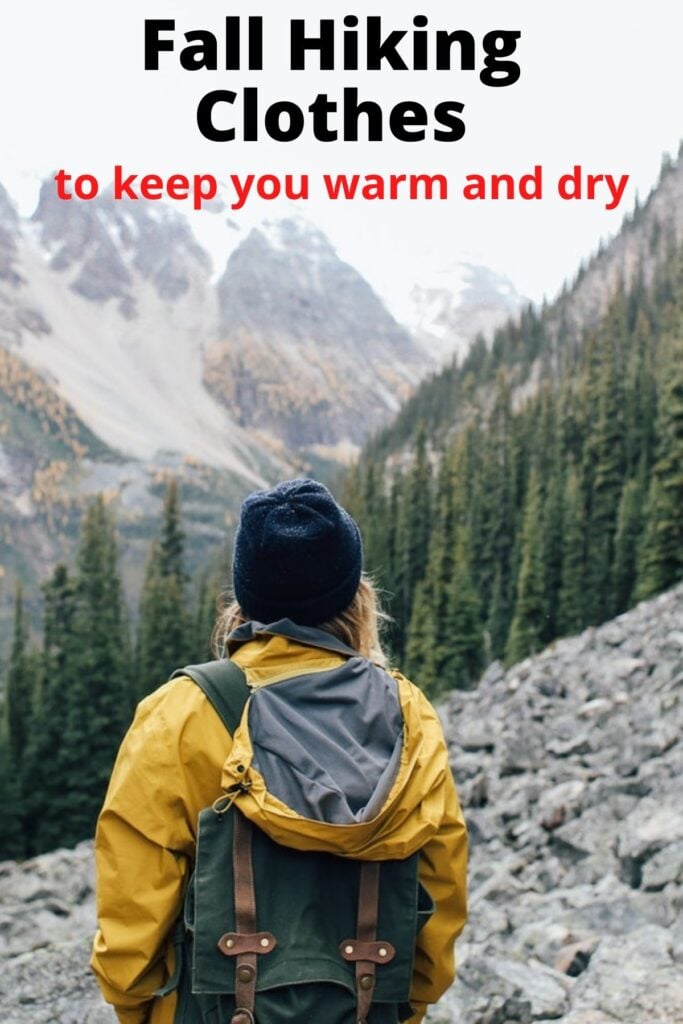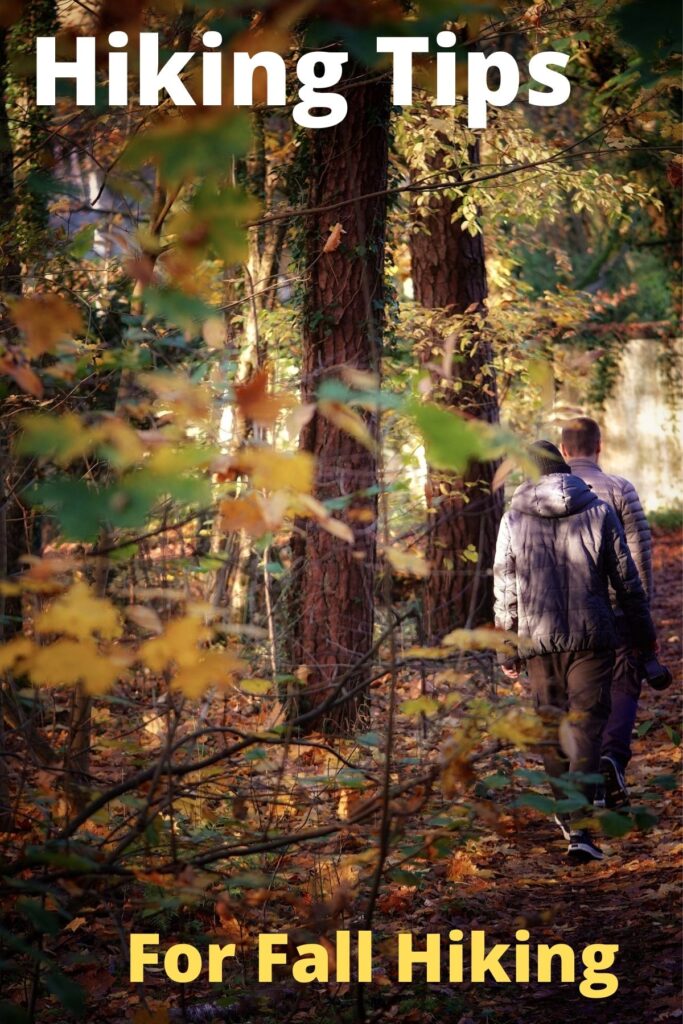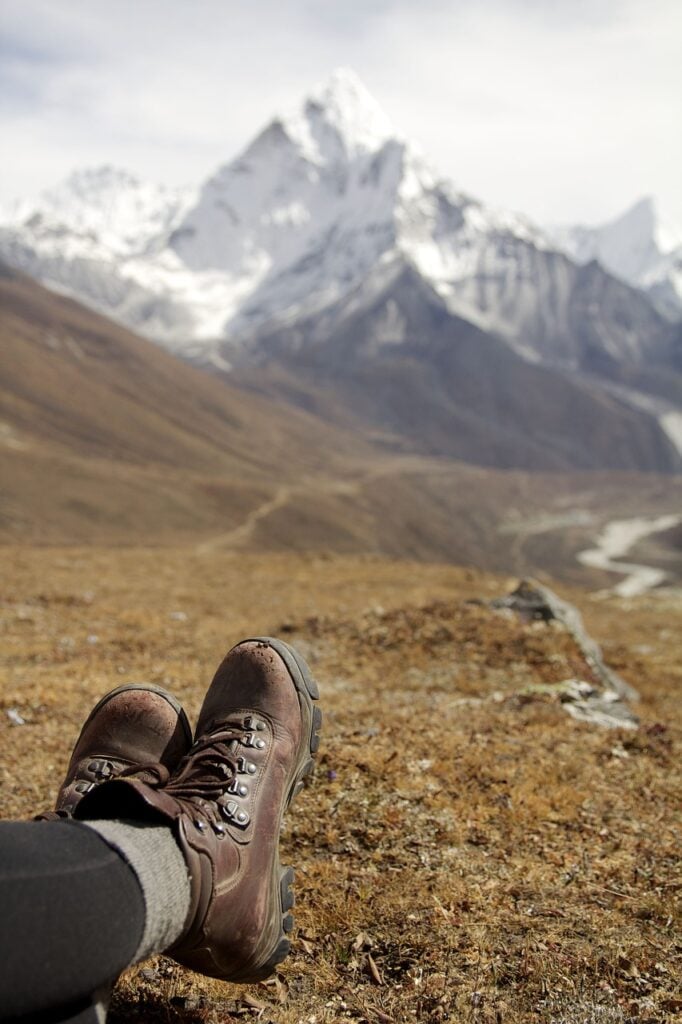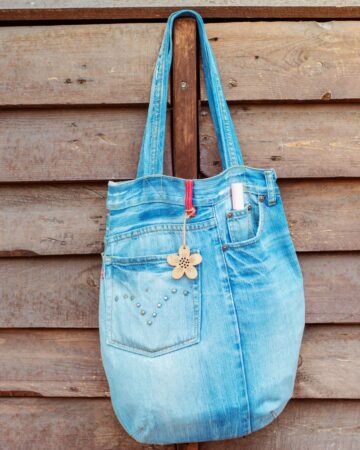Posts feature partner companies & may be sponsored. Post contains affiliate links & I will be compensated if you make a purchase after clicking on links. As an Amazon Associate I earn from qualifying purchases.
Last Updated on September 20, 2022 by Diane Hoffmaster
It’s fall and you want to go hiking, but it is getting colder outside. You don’t want to freeze while hiking, but you also don’t want to get overheated either. So, if you are wondering what to wear hiking in the fall, this gear guide is just what you need!
Wearing the right hiking gear can make or break your hike. If it is too cold outside then you will be miserable and might give up on your hike early which isn't great for your fitness goals. However, if it's too hot out then you are going to feel sweaty and gross.
The best way to avoid both extremes of overheating or freezing is by wearing multiple layers of clothing while hiking in the fall season. Here are some tips about what fabrics/materials work best for each layer depending on weather conditions.
Table of Contents
Best clothing fabric for fall hiking
The best clothes for hiking are made of materials that keep you dry. You may be tempted to wear a shirt made of cotton, but it will actually stay wet and make you cold if the temperature drops.
In cold weather, try these hiking fabrics
Wool – Wool is a great material to have in your clothing. Wool hiking clothes can be used in both warm and cold climates because of how well it insulates you. In addition, wool is able to trap warm air around you, so you stay warmer when it's cold outside. Try this 100% Merino Wool Midweight Long Sleeve Thermal Shirt as a base layer.
Gortex - Goretex is amazing at keeping the water out while still letting the sweat from your hike evaporate, which will keep you dry and warm. So if it starts to rain unexpectedly on your hike then you won’t be soaked through and cold as you would be in cotton. A Gortex or similar material is essential for hikes in wetter conditions.
Polyester - Polyester hiking clothes are made to be stretchy and form-fitting so you don’t catch a breeze when hiking. This can keep you warm if it is chilly outside. It's also lightweight and breathable which makes it a good choice for hiking clothes.
Nylon - Nylon hiking clothes are also lightweight and stretchy. Nylon isn't as good as polyester for keeping sweat off your skin but it dries quickly Try these Water Resistant Hiking Pants with Pockets on your next hike.
Worst material for fall hikes in cold weather
Cotton – Cotton is great if you are moving around a lot because it absorbs sweat, but when it comes down to the colder months then cotton will just make you feel wet from that sweat and also cold from having less insulation. Also if cotton gets wet it becomes even colder and freezes up.
Denim - If hiking in the cold, denim is not a good hiking material because it doesn’t breathe. It is also not particularly flexible and can start to rub and cause irritation.
Silk - Silk is not a great hiking fabric because it doesn’t insulate at all. It also has a tendency to trap odor, which is not a good feature for hiking clothes at all!
What to wear hiking in the fall
Wool Socks
Since you don't want to be wet from sweat or water, wearing wool socks is the best way to keep your feet warm and dry. Look for merino wool socks to seriously pamper your feet.
Hiking Boots
A great pair of waterproof hiking boots with quality insulation is your best bet for keeping your feet warm and dry, especially if you are going through wet conditions. If you prefer light weight hiking shoes, those are also a good choice.
Hiking Pants
Many hiking pants have zippers that allow you to go from pants to shorts in case you get too warm.
Fleece Jacket
A fleece jacket will keep you warm but also be breathable so that you won't feel sweaty or uncomfortable. Wearing the right outer layers helps your inner layers stay dry.
Hiking Shirt
A breathable shirt that will also keep you warm and covered is the best option. Look for materials that wick the sweat away from your skin.
Hiking Gloves
Wool hiking gloves can keep your hands warm when hiking in fall weather conditions. Get ones that are lightweight enough that they can easily be stuffed in your jacket pocket. Touch screen friendly gloves are a good choice.
Warm Hat
A wool or fleece hat can keep your head warm and dry if you start to feel chilly on your hike. Remember, most of your heat is lost through your head!
Base Layers
A base layer will help wick sweat from your body so you stay dry while also keeping you warm. Base layers are great to wear under your clothing to keep you warm during colder months because they are made from a special material that takes sweat away from your body to keep you warm and dry.
Leggings
A base layer legging can help keep you warm and dry during your hike. They are also great to sleep in if you plan on staying in the woods overnight.
Rain Jackets
A rain jacket will keep you dry if it starts to rain while hiking. Something lightweight that fits in your pack easily is a great choice. Pair it with rain pants for the best protection from the elements.
Hiking Clothing: Things to Consider Before Buying
What type of clothes are best for hiking? Well, there are a few characteristics you should look for as you start putting together your fall hiking gear. Here are a few things to keep in mind.
Safety: Shop for safety when looking for hiking clothes. That means it needs to keep you warm, sure-footed, and dry. If it does all of those things, you're good to go.
Comfort: Your hiking clothes should be loose-fitting enough to offer freedom of movement. Tight clothes may cause skin irritation as it rubs.
Durability: Not only should your clothes and hiking boots not break down on the trail, but they should also last you several seasons to make it worth your money.
Weight: if you are backpacking, weight really matters when it comes to the clothes you will be carrying on the trail.
Budget: Be conscious of price, especially if you are a beginner hiker. While you don't want your clothes to be cheaply made, don't spend a fortune on hiking clothes until you know this is an activity you really want to continue.
Beginner hiking tips for fall
Knowing what to wear hiking in the fall is only the first step. If you are new to the trails, here are a few simple fall hiking tips to keep in mind before you head out.
Be aware of tree roots, rocks, and other potential hazards when hiking on unfamiliar trails, as these tend to be more slippery in the fall due to leaves and fallen branches creating a false sense of hiking security.
Follow fall hiking safety advice and take all precautions, such as hiking with a partner, hiking in daylight hours only, bringing along emergency gear including a map and compass, and first aid supplies.
Be aware of the changing weather and know that hiking on a warm but cloudy day can be deceiving. In addition, hiking in windy conditions or along rivers and creeks in the fall means you may come across early snowmelt.
Report any hiking dangers such as wild animals, hazardous debris, or other hikers to park rangers.
Be sure to check the weather before hiking and wear hiking boots rather than sneakers to protect yourself from thorns, rocks, and broken glass.
More hiking tips to read before you head out
Now that you know what to wear hiking in the fall, make your packing list, grab your trekking poles, and head out with your backpacking gear for an epic adventure! Of course, make sure you leave no trace and protect the trails for the next generation.
Of course, don't head out on the trail before reading these camping and hiking posts, too:
- Hiking Tips for Beginners Learn how to stay safe while hiking in the fall by keeping in mind a few of these tips
- Hiking Tips for Women (what the books don't tell you!) If you are planning a hiking trip soon and happen to be female, you might want to remember these hiking tips for women as you plan your trip.
- Tips for hiking with teenagers: Here are some tips for hiking with teens so that your outdoor family adventure is one you will want to repeat!
- Middle-aged hiking tips to keep you hiking past 50. Because hiking gets more challenging the older you get.

Diane is a professional blogger and nationally certified pharmacy technician at Good Pill Pharmacy. She has two college aged kids, one husband and more pets than she will admit to. She earned her BS in Microbiology at the University of New Hampshire but left her career in science to become a stay at home mom. Years of playing with LEGO and coloring with crayons had her craving a more grown up purpose to her life and she began blogging and freelance writing full time. You can learn more about her HERE.










Leave a Reply